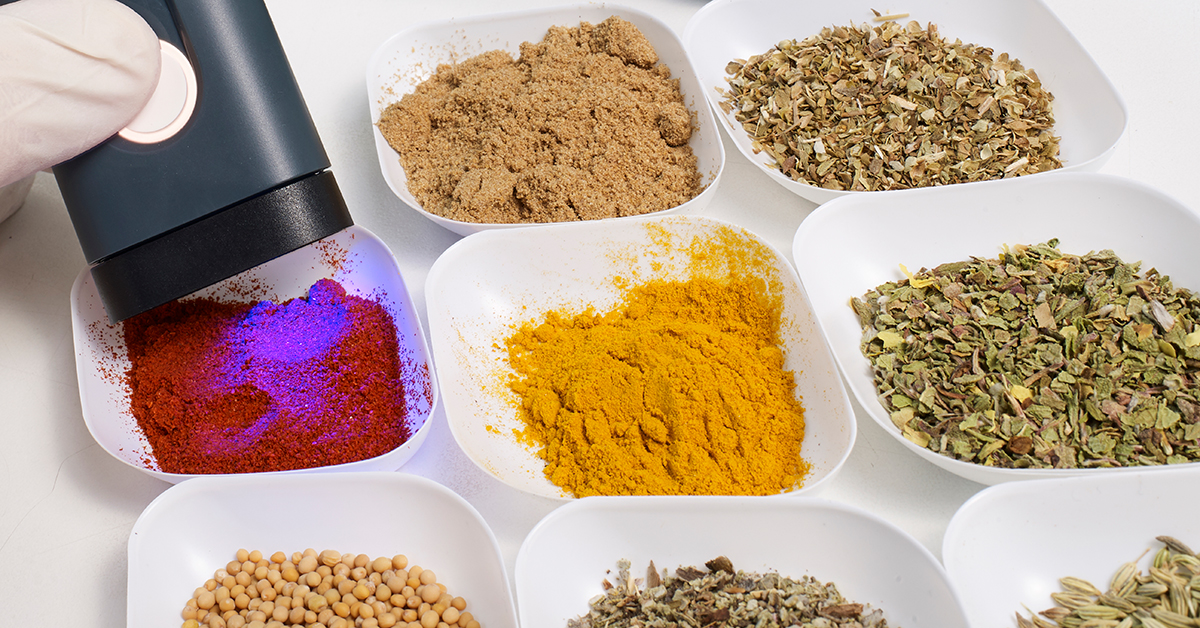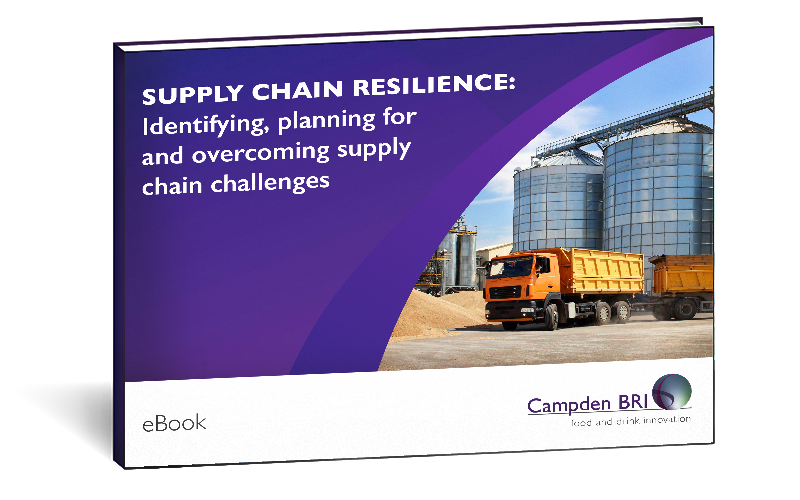
Four ways to build supply chain resilience
30 October 2023 | Andrew Collins, Global Food Safety Lead
Supply chain threats – namely challenges of availability and cost, resulting in food safety threats and food fraud – can come in many forms and sizes, both globally and close to home. Situations of varying scale and proximity can threaten the productivity and profitability of food and drink businesses.
Supply chain resilience is the application of resilience principles and alignment to best practices, such that a business is protecting itself from negative impacts of supply chain threats and be agile in responding to challenges. Supply chain resilience also allows food business operators to benefit from good reputation, clarity of purpose, effectiveness, efficiency and competitiveness.
Download our FREE Supply Chain Resilience eBook today! Thrive in a changing environment by being prepared, agile and resilient.

There are a number of tools that form part of supply chain resilience, and a number of strategies that can be implemented. We explore four of them here. For more supply chain resilience strategies, check out our eBook ‘Supply Chain Resilience: Identifying, planning for and overcoming supply chain challenges’.
1. Have an agile, holistic FSMS
The food and drink industry faces many threats and risks from throughout the supply chain. These are not static and factors such as legislation changes, products and processes, as well as known and unknown hazards, all have an influence. Food safety management systems (FSMSs) therefore have to ensure a holistic approach and be able to adapt to meet new challenges.
A holistic FSMS will include HACCP and TACCP (food fraud and food defence). Whilst it is important to have systems in place, building resilience is just as much about how you use them. Through a proactive approach, you can build supply chain resilience by making your food safety management systems more dynamic (able to respond in an ever-changing procurement environment), rather than fixed points in time where you just have one annual review of specifications, HACCP and TACCP plans, and raw material risk assessments.
2. Ensure the right culture for resilience
A positive food safety culture means that no matter the external influence (time pressures, financial pressures, etc.), food safety is of the utmost importance under all circumstances. It is paramount for enduring the success of the controls that you have in place.
You need situational awareness and effective communication to understand the impact and consequences of failure. Your system needs to be adaptable to allow people respond to these challenges as they arise.
Food and drink business operators need to ensure that ‘frontline’ workers are afforded the awareness, resources and information needed to make risk-based decisions and take action appropriate action, and are trusted to do so.
3. Know your supply chain
We need data and information on the vulnerabilities of our supply chains to be able to acquire knowledge and reduce uncertainty in the information being used to make risk-based decisions.
Materials can pass through many different ‘hands’ before they get to you, including food producers, processors, agents and traders. It's important to understand all the stages because subtle changes can have a big consequential impact.
When auditing suppliers, you must make sure to look at the whole package of controls in place and take a holistic view of all elements of their food safety and quality management systems as well as the controls in place at their suppliers.
You need to develop strong relationships that facilitate open and honest discussion, particularly around changes and challenges. Where there is a change in a raw material, the processing of a raw material or the supplier of a raw material, you may have to review the associated risk assessment.
To build resilience, you need to have back-up plans and redundancies within your product’s supply chain. An early, proactive approach will help ensure that you have the time and resources you need to get this right, and have back-up plans in place in advance, rather than unexpected cost and availability challenges putting you under pressure.

4. Look ahead and stay informed
Food business operators must have robust measures in place for identifying, planning for and dealing with supply chain challenges, in order to protect consumers, reputation and their bottom line. It is important to conduct horizon scanning and take action early when a threat is identified (for example, food fraud triggers such as drought, conflict or price increases) – review the food safety and quality management systems and get plans put in place so that you are confident that you have addressed the threat.
Looking ahead does not always mean looking out for threats; horizon scanning techniques can also be used to identify emerging trends and opportunities. This could lead, for example, to strategic product development or investment in new technology.
Publicly available data published relating to supply chain challenges and threats tend to relate to when things have already gone wrong, i.e. non-compliance regulatory breeches. These are only part of the picture of our procurement environment – businesses need to look further ahead to identify potential threats. As well as regulatory considerations, businesses need to also consider other factors such as quality and brand or reputational damage.
Build resilience now for a safe and profitable future
Supply chain resilience enables businesses to protect themselves from negative impacts of supply chain threats, and thrive in an ever-changing environment. Your business will need to have assurance of the effectiveness and level of maturity of your implemented supply chain resilience system, i.e. is it in place, is it working, and is there a positive feedback loop of continuous improvement.
Across our wide range of services, we can support with all elements of Supply chain resilience – from analysis and testing, culture excellence and training, management systems and best practice, supplier quality assurance, and navigating ingredient variability and changes, to providing information and guidance on all of these elements.
For more supply chain resilience strategies, check out our eBook ‘Supply Chain Resilience: Identifying, planning for and overcoming supply chain challenges’.

About Andrew Collins
Andrew joined Campden BRI at the beginning of 2009. With over 30-years’ experience in a wide range of food businesses (including catering), his current role focuses on consultancy work with the holistic and practical application of food safety management including the role of HACCP and good hygiene practices.
He is a certified BowTie practitioner, and is one of the few food safety experts globally using BowTie methodology – a barrier, risk-based thinking approach to risk management in the food businesses. This approach enables businesses to build holistic, resilient and adaptive systems in a rapidly changing environment.
Andrew also works on supply chain management, agriculture and water use, animal feed and traceability. Plus, he’s part of the team that manages hygiene and allergen management.
How can we help you?
If you’d like to find out more about building resilience into your supply chain, contact our support team to find out how we can help.
Download our FREE ‘Supply Chain Resilience’ eBook today!
Be resilient and thrive – ensure continuity of supply of safe, quality food.







